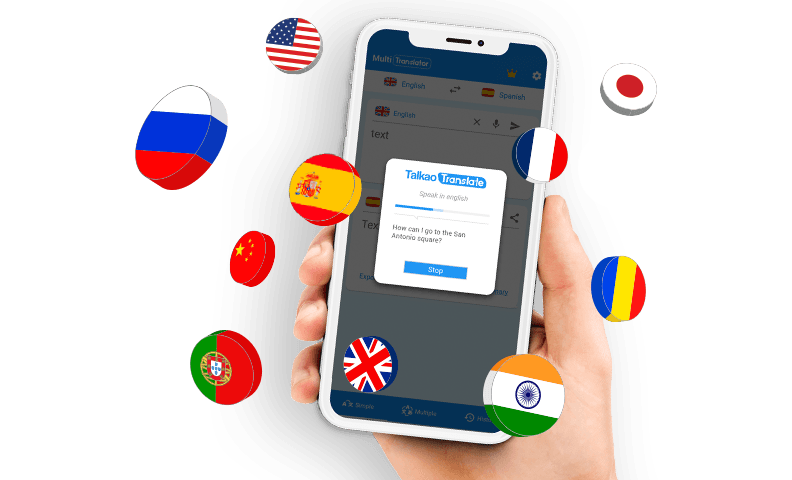
Why are French prepositions the focus of our first lesson? Let’s discover the crucial role these small words play in French conversation. You’ll see how these “bridges” or connectors serve as the foundation of a sentence. Plus, you’ll learn how to use French prepositions to build sentences and meaningful phrases.
French is famously known as “le langage de l’amour,” or the language of love. But what people don’t often mention is that French can be quite tricky when it comes to pronunciation and grammar. While its grammar shares many similarities with Spanish, pronunciation often becomes a challenge… until now!
In this first French class, you’ll get the essential tools to make basic greetings and introductions. By the end of the lesson, you’ll be combining French prepositions with simple vocabulary to create more complex sentences. You’ll also explore how to use predictive AI translation to improve your audio translation accuracy.
It’s going to be a hands-on, practical, and highly useful class.
Bienvenue à votre premier cours de français avec Talkao! (Welcome to your first French class with Talkao!)
Why is learning French so important today?
Before diving into how to use French prepositions, let’s take a moment to reflect on something crucial:
Why should you choose to learn French over another language?
Of course, learning one language doesn’t exclude the possibility of learning others. In fact, with today’s AI-powered predictive translation technology, learning multiple languages at once is more achievable than ever. What matters is recognizing French as one of the most relevant languages in the global professional landscape.
Additionally, French is deeply connected to culture, the arts, and intellectual heritage. Let’s not forget: more than 300 million people across five continents speak French. Let’s break down the top advantages of learning French in today’s world.
French as a language for business
In today’s globalized world, speaking French can open doors to international markets. France is the world’s sixth-largest economy, and its language is spoken in over 29 countries across all continents. Former French colonies like Canada and the Caribbean islands are now thriving business hubs. Moreover, major European nations such as Belgium and Luxembourg also use French widely. Not to mention large parts of Africa and regions of Asia where French is a key language.
For professionals aiming to work in multinational environments, French is a strategic asset. Leading global companies such as L’Oréal, Renault, Danone, Total Energies, and BNP Paribas operate in French and have a strong presence in emerging markets with high investment potential.
French is also the third most used language on the internet, reinforcing its relevance in the digital era.

French in diplomacy and international relations
If you work in foreign trade, tourism, diplomacy, or international relations, French becomes a strategic tool. In many global institutions, it is an essential working language. Organizations such as the UN, NATO, the European Union, and the Red Cross officially use French as a primary language.
Fluency in French can set your professional profile apart from other candidates in these competitive fields. It can act as a gateway to new career opportunities both at home and abroad—especially in the world of diplomacy and global governance. Today, French is considered a key language in these sectors. It is also the second most-studied language worldwide, right after English.
Educational advantages of learning French
For those in academia, learning French opens up access to exclusive opportunities. Prestigious educational institutions like La Sorbonne and Sciences Po in Paris are internationally recognized and often offer scholarships to international students who speak French.
Moreover, knowing French gives you direct access to scientific research, books, and articles that may not be available in English. While AI translation can assist, having real command of the language provides superior accuracy and understanding—especially when it comes to audio and written translations.
French has historically served as a medium for sharing knowledge, particularly in philosophy, arts, politics, and the social sciences. And beyond that, learning French strengthens your ability to learn other Romance languages like Spanish, Italian, or Portuguese, thanks to their shared grammatical structures and vocabulary.
Personal growth and cultural development
Learning French goes far beyond acquiring a technical skill. It’s a journey of cultural discovery and personal enrichment. You’ll gain access to the original works of great writers like Victor Hugo, Albert Camus, and Marguerite Duras, capturing subtle meanings that often get lost in translation.
Similarly, French cinema is globally celebrated for its unique style. While audio translation technology is improving, understanding the language allows you to enjoy films without relying on subtitles. You’ll also be able to immerse yourself in Francophone music, art, and cuisine.
In a broader sense, learning a new language enhances memory, concentration, and cognitive flexibility. It also fosters empathy and open-mindedness by helping you understand new perspectives and ways of expression.
Now that we’ve covered why French is such a powerful and relevant language today, it’s time to get into the practical side.
Let’s explore the main French prepositions and how they form the backbone of effective communication.
French prepositions: What is their role in grammar and conversation?
Taking your first steps in learning French is both exciting and challenging. During your learning journey, you’ve probably come across French prepositions. And you may have noticed that they are among the most frequent—and sometimes most confusing—elements of the language. These small words play a crucial role in both writing and everyday conversation.
Mastering them will allow you to express yourself more precisely, fluently, and naturally. Plus, you’ll gain a solid foundation to advance toward greater language proficiency. But what exactly are French prepositions? That’s something we must clearly understand before diving deeper into how they work.
What are French prepositions and why are they important?
In the simplest terms, prepositions are invariable words that link different parts of a sentence. These relationships may indicate place, time, cause, purpose, accompaniment, possession, and more. While English also uses prepositions, French prepositions follow their own set of rules, and as you’ll see, they don’t always translate directly.
Even when using AI-powered predictive translation tools, it’s essential to understand what prepositions are, how they differ from one another, and how to use them correctly.
Mastering French prepositions is key to fluency. Why? Because misusing a preposition can completely alter the meaning of a sentence. It can lead to misunderstandings or simply make your speech sound unnatural. On the other hand, correct usage reflects a strong command of the language. This significantly improves your listening and reading comprehension—as well as your accuracy in audio translation.
There are several types of prepositions in French, but let’s focus on the most commonly used ones in everyday situations.

Types of French prepositions
French prepositions can be categorized based on the type of relationship they express. Just like in English, there are certain prepositions that are more frequently used and have different purposes. In our first French class, we’ll explore the most commonly used French prepositions:
Prepositions of place
These prepositions indicate the position or direction of something or someone. Our first French lesson introduces us to some of the most frequently used prepositions of place:
- à (in, at, to): Je suis à Paris. (I am in Paris.)
- dans (inside): Le livre est dans le sac. (The book is inside the bag.)
- sur (on, on top of): Le stylo est sur la table. (The pen is on the table.)
- sous (under): Le chat est sous le lit. (The cat is under the bed.)
- chez (at someone’s place): Je vais chez le médecin. (I’m going to the doctor’s.)
Prepositions of time
These prepositions allow us to place actions or events in time. Notice how our French teacher explains their proper use:
- depuis (since): Je vis ici depuis 2010. (I’ve lived here since 2010.)
- pendant (during): Il a dormi pendant deux heures. (He slept for two hours.)
- en (in, within): Je finirai en une semaine. (I will finish in one week.)
- avant (before): Nous partirons avant midi. (We will leave before noon.)
- après (after): Il est arrivé après toi. (He arrived after you.)
Prepositions of cause and purpose
These express motives or intentions. If you’re using an AI-powered predictive translation tool, you’ll often come across the following:
- pour (for, in order to): C’est un cadeau pour toi. (It’s a gift for you.)
- par (by, through): Il a réussi par chance. (He succeeded by chance.)
- à cause de (because of): Il est en retard à cause de la pluie. (He’s late because of the rain.)
Prepositions of manner and accompaniment
These prepositions describe how or with whom something is done. According to our French teacher, these are the most common:
- avec (with): Je parle avec mes amis. (I’m speaking with my friends.)
- sans (without): Elle est partie sans moi. (She left without me.)
- comme (like, as): Il travaille comme professeur. (He works as a teacher.)
How do I learn to use French prepositions correctly?
As you may have already noticed, many French prepositions can seem quite similar to one another. In fact, several of them have Spanish or English equivalents, but their application can vary significantly. That’s why our French teacher shares a few tips to help you integrate French prepositions into your learning process:
Learn prepositions in context
Memorizing word lists can be useful at the beginning. However, true learning happens when you associate French prepositions with real-life phrases. Try creating your own examples or copying sentences you find in books, songs, or movies. Also, use audio translation technology to identify them in real time. How? Here are a few suggestions:
- With the Talkao Translate app, you can translate from your native language into French. This simple exercise helps you understand how prepositions are used in a sentence.
- AI-powered predictive translation features, such as Talkao’s real-time translation, are ideal. You’ll be able to translate any audio—like a song or conversation—as it happens. This allows you to learn how to pronounce French prepositions correctly.
- Use Talkao’s streaming video translator to translate live classes, podcasts, and other multimedia content. This way, you can easily identify when and how each preposition is used in context.
Pay attention to prepositional verbs
Many French verbs require a specific preposition to function properly. For example:
- Penser à (to think of): Je pense à toi. (I’m thinking of you.)
- S’occuper de (to take care of): Je m’occupe de l’organisation. (I’m taking care of the organization.)
- Parler de (to talk about): Nous parlons de ce projet. (We’re talking about this project.)
These uses don’t always match their English equivalents, so it’s important to study them carefully. Fortunately, with regular practice and AI-based predictive translation tools, it becomes much easier. Take a look:
- Talkao’s AI text translator: This feature lets you write any text in Spanish (or more than 125 languages) and translate it into French. It helps you observe correct spelling, grammar, and word usage.
- Talkao’s camera translator: No need to transcribe manually. This tool lets you translate text found in images, books, or printed documents. You’ll be able to recognize key visual elements, like accents and diaeresis, which are very common in French.
- Document translation feature: This function allows you to see how French prepositions are used correctly in well-written texts such as documents, articles, and academic papers.
Get familiar with interactive exercises and digital tools
Online learning platforms offer practical, self-correcting exercises that help reinforce the use of French prepositions in an interactive way. Make use of audio translation precision technology for daily practice. In addition, take advantage of AI-powered predictive translation as a learning tool during your French classes.
Practice active listening
Listening to podcasts—like Talkao’s French podcasts—videos, and everyday conversations in French is an invaluable resource. It’s also a great way to internalize the natural use of French prepositions. The more you’re exposed to the language, the easier it will be to use these prepositions correctly.
Use the real-time translator to communicate with native speakers. Even if you make mistakes at first, over time, you’ll notice your progress growing steadily.
Common mistakes to avoid when using French prepositions
When you’re learning French, it’s perfectly normal to make mistakes with prepositions. According to our French teacher, these are some of the most common errors you can easily avoid:
- Confusing à and chez: Remember that à is used with places (à la bibliothèque), while chez is used with people or professionals (chez le dentiste).
- Omitting the required preposition with certain verbs: For example, aider quelqu’un à faire quelque chose (to help someone do something). Skipping the à is a typical beginner’s mistake.
- Using a literal translation from your language: Translating word by word in your language isn’t always correct. It’s essential to understand the specific use of each preposition in French.
Of course, the list of possible mistakes is endless and often unique to each learner. But here’s the good news: every mistake is an opportunity to improve. If you stay alert and identify where you went wrong, you’re less likely to repeat it in the future. And the best way to do that is by following these tips:
3 steps to master French prepositions
At the end of our first French class, there’s one key takeaway: to truly learn, you must…
- Practice, practice, and… practice!: Daily repetition helps you improve, recognize your mistakes faster, and build confidence when using French prepositions.
- Use AI-powered predictive translation tools: On Talkao’s website, you’ll find several features and apps to translate text, audio, and video content. Use one—or all of them—as supporting tools to reinforce your learning.
- Don’t be afraid of making mistakes!: No one learns a language without getting it wrong at first. So let go of fear and dive into one of the most beautiful languages in the world!








Newsletter